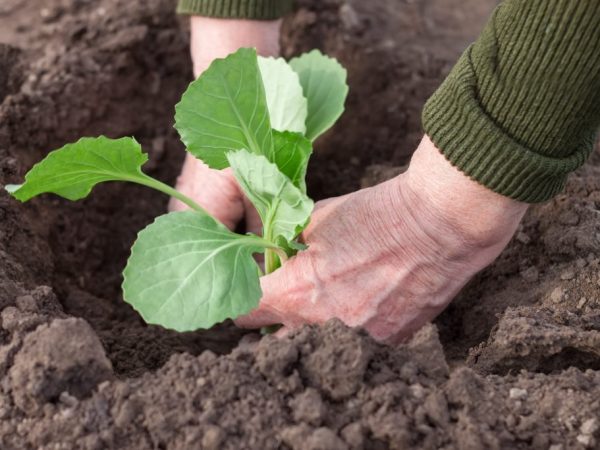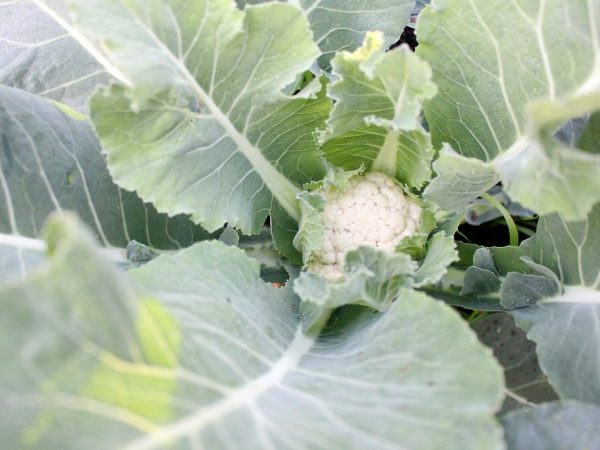Rules for growing cauliflower
Growing cauliflower is not an easy process. Not every gardener knows all the intricacies of planting this culture and caring for it. Consider how to grow cauliflower properly.

Rules for growing cauliflower
Dates of sowing seeds for seedlings
Sowing of cauliflower seeds is carried out in several stages, depending on the growing season of a particular variety. It is recommended to sow early types of seeds at the end of February. At this time, it is better to keep the containers indoors to ensure that the seed is properly cared for at home. After 40 days, the seedlings are fully formed (the root system develops and several pairs of main leaves open up), after which it can be planted in open ground.
The ideal time for planting medium early seed varieties is mid-March. In early April, late varieties are already planted. Planting dates depend on the frost resistance of the species. Late varieties are more susceptible to frost, so they should be sown when good weather has stabilized outside.
Growing cauliflower seedlings
Seed preparation
Sowing cauliflower seeds at home occurs only after they have passed all the stages of disinfection and processing.
- Planting material should be placed in a container filled with warm water (about 45-55 ° C) for 30 minutes.
- After that, the seeds must be removed and thoroughly rinsed under the pressure of cold running water.
- Next, you need to place them in a manganese solution for 10-13 hours in order to destroy all bacteria and harmful microelements.
- After processing, the seeds are washed again under cold running water for 1 minute.
- Then they need to be placed in the refrigerator for a day to prepare them for future planting of cauliflower in the open ground.
As soon as the seeds are dry, you need to plant them in separate containers (2-3 seeds should be sown in each pot). This will increase germination. Sowing cauliflower into a container should be done at a depth of at least 1 cm.
Seedlings of cauliflower
The cultivation of cauliflower seedlings must be carried out under specific conditions. Until the first shoots appear, you should adhere to a room temperature of about 20 ° C. After the emergence of shoots, it decreases to 6 °. Containers should be placed on a windowsill for better illumination. A week later, the temperature regime should be as follows: during the day - about 18 ° С, and at night up to 8 ° С. This will allow the seedlings to be prepared for temperature extremes after planting the cauliflower outdoors.
Growing cauliflower from seeds (i.e., getting seedlings) should be accompanied by maintenance measures. During this period, it is necessary to conduct thorough watering (1 time in 3 days), feed the seedlings (about 20 g of humus should fall on 1 pot) and remove all weeds.After the appearance of the first pair of leaves, the seedlings are thoroughly watered with Bordeaux liquid to reduce the risk of disease.
Planting cauliflower seedlings in the ground
You need to plant cauliflower only when 2 pairs of main leaves appear on the seedlings. This usually happens in early April (for early varieties). The medium early cauliflower should be planted at the end of April. The moment of planting of late varieties of cauliflower occurs in mid-May.
7 days before the intended planting, all material should be treated with superphosphate. This will reduce the risk of pests and diseases, as well as enhance the plant's immunity to the environment.
Soil preparation

Cabbage is a heat-loving plant
Planting cauliflower seedlings should not be done in sunny weather. Better if it is a windy and cloudy day. This will protect the seedlings from an overabundance of sunlight and from drought of the root system. You should also determine where the crop can be planted. It is recommended to choose areas that are well lit by the sun: this culture belongs to the thermophilic varieties. Planting cauliflower should be carried out in such a soil, the acid-base balance of which does not exceed 5%. If the level of alkali in the soil is high, then it is treated with lime.
You need to grow a plant only in prepared soil. In advance in the fall, you should dig up the ground in the garden with a shovel. In the spring, a few weeks before planting, it is important to add humus or compost. This will nourish the land and make it more fertile. You can also use a specially prepared mixture: superphosphate, wood ash and humus are mixed in equal amounts. Fertilizer is applied at the rate of 500 g per 1m2.
Landing technology
Planting cauliflower should be treated with special care. This culture is quite susceptible to negative environmental factors. As soon as the conditions for proper planting are violated, the culture may die. It is recommended to pay attention to the gardener's lunar calendar, which shows all the rules for planting a crop.
The planting scheme for cauliflower seedlings depends on which variety you have chosen. The recommended distance between plants is about 40 cm. The technology of planting a crop provides for a distance of 50-60 cm. Planting cauliflower should be so that the seedlings are immersed in the soil to a depth of about 7 cm.
Planting cauliflower seedlings should be carried out only after the soil warms up to 10 ° C. Otherwise, the root system will die, and the yield will decrease significantly. If you decide to plant cauliflower in April, then you should definitely take care of the polycarbonate plant shelter. This is done in order to protect them from sudden changes in temperature outdoors. It is recommended to lift the film once a day so that the plants receive oxygen. The ventilation interval should be increased daily. As soon as it reaches 5-7 hours a day, you can completely remove the covering material.
You can plant cauliflower from seeds. A seedless culture is planted only in those regions where spring begins early and winter frosts end at the end of March. The ideal time to plant cauliflower from seeds is early April. The material germinates, even if the temperature is 5-7 ° C, but if possible, it is better to keep the seedlings in the greenhouse until the beginning of May.
Cauliflower care

Plants need good care
The culture is not resistant to negative environmental factors (wind, sun, high humidity, etc.). The guarantees of high quality of usefulness - correct and timely care.
Cauliflower needs timely watering, quality fertilizers and regular weed removal.It is important to properly loosen the soil so that the root system receives the right amount of moisture, nutrients and oxygen. High-quality cultivation of most varieties of cauliflower directly depends on how effectively the measures for removing weeds and loosening are carried out.
It is recommended to loosen the soil to a depth of at least 7 cm. This is necessary for better equipping the roots with all the necessary components. Weeds should be removed every 4-5 days after watering. This condition must be met so that the weeds do not interfere with the development of the roots.
Watering principle
To grow cauliflower properly, you should water it regularly. For several months after planting, watering is carried out about 1 time in 3-4 days. After a few months, you can stick to an interval of 1 time per week.
The amount of water is approximately 7L per 1m2. As soon as the seedlings begin to grow, the amount of water supplied should be increased. In order not to harm the plant with excessive watering, it is important to pay attention to the weather: if precipitation falls quite often, and the soil is already saturated with moisture by 8-10 cm, it is better to stop irrigation work, because this can lead to root rot.
Feeding
During the growing season, the crop should receive fertilizers about 3 times. The first top dressing, which is carried out 20 days after planting in open ground, should include organic matter. At this point, you can use a solution from cow dung. It is quite simple to prepare it: about 3 kg of mullein should be diluted in 10 liters of warm water. At least 1 liter of solution is poured into the roots of each plant.
It is very important to pay attention to the following two dressings.
The second fertilization is carried out one and a half weeks after the first treatment. It contains mullein. The peculiarity of such feeding is that another 1 tbsp is added there. l. drug Kristalin: it provides not only treatment, but also good prevention of diseases. The prepared mixture is poured into the roots in a volume of 1.2 liters per 1 bush.
The third subcortex is carried out during the period of fetal formation. As a rule, mineral fertilizers are used at this moment. About 100 g of Nitrofox and 200 g of potassium chloride should be diluted in 5 liters of warm water. At least 1.5 liters of solution are poured into each bush.
Common diseases
Among the most common diseases to which the culture in question is exposed is Alternaria. Black or brown spots begin to appear on the plant, after which the leaves dry and fall off. You can fight the disease with the help of drugs that include copper (Bordeaux liquid, copper sulfate or sulfur). It is better not to use other methods of control, since they can adversely affect the amount of the crop.
Keela manifests itself in the formation of blisters on the root system. They lead to the death of the entire plant. You can fight the disease in a proven way - wood ash. It is applied every 10 days until the complete destruction of the disease. You can also use dolomite flour: it is added to the water for irrigation.
Ring spot is very dangerous for the plant. Its main symptoms are the appearance of black spots throughout the entire area of the bush. You can get rid of the disease only with the help of special treatment with fungicidal preparations. Wet rot, which appears as watery dark spots, is well destroyed with colloidal sulfur. All damaged leaves should be trimmed and discarded from the crop.
The main symptoms of fusarium are the presence of yellow leaves, which are bad for the fruiting of the bush. You can get rid of it with the help of the drug Benomil, which is used to cultivate the land in the garden every 7-9 days.
Conclusion
To understand how to grow cauliflower seedlings, you need to know the features of the agricultural technology of this culture and the secrets of its cultivation.The quality and quantity of the harvest depends on proper care.


